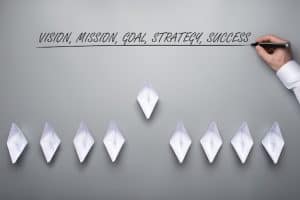Establishing a Robust Quality Assurance Framework
Quality assurance (QA) is the bedrock of any successful business operation. It’s not merely about catching errors; it’s about cultivating a culture of excellence that permeates every aspect of an organisation. As companies strive to meet and exceed customer expectations, the need for a robust QA framework becomes increasingly apparent.
In the competitive landscape of today’s market, businesses that prioritise quality gain a significant edge over their rivals. A well-implemented QA system can lead to improved customer satisfaction, reduced costs, and enhanced brand reputation. However, establishing such a framework requires careful planning, dedication, and often, specialised expertise.
Many forward-thinking companies have recognised the value of partnering with external QA specialists to bolster their internal processes. For instance, a mid-sized software development firm in Manchester recently collaborated with an outsourced QA team to overhaul their testing procedures. This partnership not only improved their product quality but also allowed their in-house developers to focus on core business activities, resulting in a 30% increase in productivity.
Defining Clear Objectives and Standards
The cornerstone of any effective QA strategy lies in defining clear objectives and standards. Without these guideposts, quality efforts can become scattered and ineffective. It’s crucial to establish measurable performance indicators that align with your business goals and customer expectations.
When crafting these metrics, consider both quantitative and qualitative measures. For a manufacturing company, this might include defect rates, production efficiency, and customer return rates. In contrast, a service-oriented business might focus on customer satisfaction scores, response times, and issue resolution rates.
A London-based e-commerce company recently sought assistance from an administrative outsourcing service to help define and track their QA metrics. The external team brought fresh perspectives and industry best practices, helping the company establish a comprehensive set of KPIs. This collaboration resulted in a 25% reduction in customer complaints and a 15% increase in repeat purchases within six months.
Cultivating Consistent Testing Processes
Consistency is key in quality assurance. Irregular or haphazard testing can lead to overlooked issues and inconsistent product quality. Developing a structured, multi-tiered testing protocol ensures thorough coverage and reliable results.
A typical testing hierarchy includes unit testing, integration testing, and system testing. Unit testing focuses on individual components, integration testing examines how these components work together, and system testing evaluates the entire product or service as a whole.
However, it’s important to remember that one size doesn’t fit all when it comes to testing strategies. Each product or service may require a tailored approach based on its unique characteristics and potential failure points.
A healthcare technology startup in Birmingham found great success in partnering with an outsourced QA team to develop and implement a customised testing strategy for their new patient management software. The external QA experts brought in-depth knowledge of healthcare regulations and industry-specific testing methodologies, which the startup’s internal team lacked. This collaboration not only ensured compliance with stringent healthcare standards but also accelerated their time-to-market by 40%.
Early QA Integration in Development
Integrating QA early in the development process can significantly reduce the cost and time associated with fixing issues later. This proactive approach to quality management allows for early detection and resolution of potential problems, leading to smoother development cycles and higher-quality end products.
However, early integration of QA can present challenges, particularly for teams accustomed to traditional waterfall methodologies. It requires a shift in mindset and often necessitates changes in workflow and communication patterns.
A fintech company in Edinburgh faced this exact challenge when transitioning to an agile development model with integrated QA. They turned to an outsourced administrative support team to help manage this transition. The external team provided training, facilitated cross-team communication, and helped implement new project management tools. As a result, the company saw a 50% reduction in post-release bugs and a 30% increase in development speed.
The Critical Role of Documentation and Record-Keeping
Comprehensive documentation is the unsung hero of effective quality assurance. It serves as a knowledge base, a reference point for future improvements, and a crucial tool for maintaining consistency across teams and projects.
Essential components of QA documentation include test plans, test cases, bug reports, and process workflows. These documents should be clear, concise, and easily accessible to all relevant team members.
Moreover, meticulous record-keeping allows for trend analysis and continuous improvement. By tracking issues over time, teams can identify recurring problems and implement systemic solutions.
A growing marketing agency in Glasgow struggled with maintaining consistent quality across their diverse range of client projects. They engaged an outsourced administrative team to overhaul their documentation processes. The external team implemented a centralised documentation system, created standardised templates, and trained the internal staff on best practices for record-keeping. This initiative led to a 40% reduction in client revision requests and significantly improved project handovers between team members.
Regular Review and Refinement of QA Practices
The landscape of quality assurance is continually evolving, driven by technological advancements and changing customer expectations. To stay ahead, businesses must regularly review and refine their QA practices.
Conducting periodic QA audits can provide valuable insights into the effectiveness of current processes and highlight areas for improvement. These audits should be comprehensive, covering all aspects of the QA framework from testing procedures to documentation practices.
Furthermore, staying abreast of cutting-edge technologies in QA can provide a competitive advantage. Artificial intelligence and machine learning, for instance, are revolutionising automated testing capabilities, allowing for more thorough and efficient quality checks.
A retail chain with stores across the UK recognised the need to modernise their QA processes but lacked the internal expertise to do so. They partnered with an outsourced QA consultancy to conduct a thorough audit of their existing practices and recommend improvements. The external team introduced AI-powered testing tools for their e-commerce platform and implemented a continuous integration/continuous deployment (CI/CD) pipeline. These changes resulted in a 60% reduction in testing time and a 35% decrease in customer-reported issues.
Transforming QA for Long-term Success
Transforming quality assurance practices is not a one-time event but an ongoing journey. To ensure long-term success, it’s crucial to measure the impact of improved QA practices continually. This involves tracking key performance indicators over time and correlating them with business outcomes.
Moreover, fostering a culture of quality within the organisation is paramount. This involves educating all team members about the importance of quality, encouraging open communication about issues, and celebrating quality-related achievements.
Looking ahead, the future of quality assurance is likely to be shaped by emerging technologies and methodologies. From AI-driven predictive quality management to blockchain for secure and transparent quality certifications, the possibilities are exciting and potentially transformative.
A multinational manufacturing company with operations in Leeds embarked on a company-wide quality transformation initiative. Recognising the scale of the task, they engaged a team of outsourced QA specialists to guide the process. The external team worked closely with department heads to implement new QA processes, conducted training sessions for employees at all levels, and helped establish a quality-focused reward system. Two years into the initiative, the company has seen a 45% reduction in product defects, a 30% increase in customer satisfaction scores, and significant improvements in employee engagement around quality issues.
In conclusion, establishing a robust quality assurance framework is a complex but essential task for any business aiming for long-term success. It requires clear objectives, consistent processes, early integration, meticulous documentation, regular refinement, and a commitment to continuous improvement. While the journey may seem daunting, the rewards – in terms of customer satisfaction, operational efficiency, and competitive advantage – are well worth the effort. And as many successful companies have discovered, partnering with external QA experts can provide the knowledge, skills, and fresh perspectives needed to elevate quality assurance to new heights.






